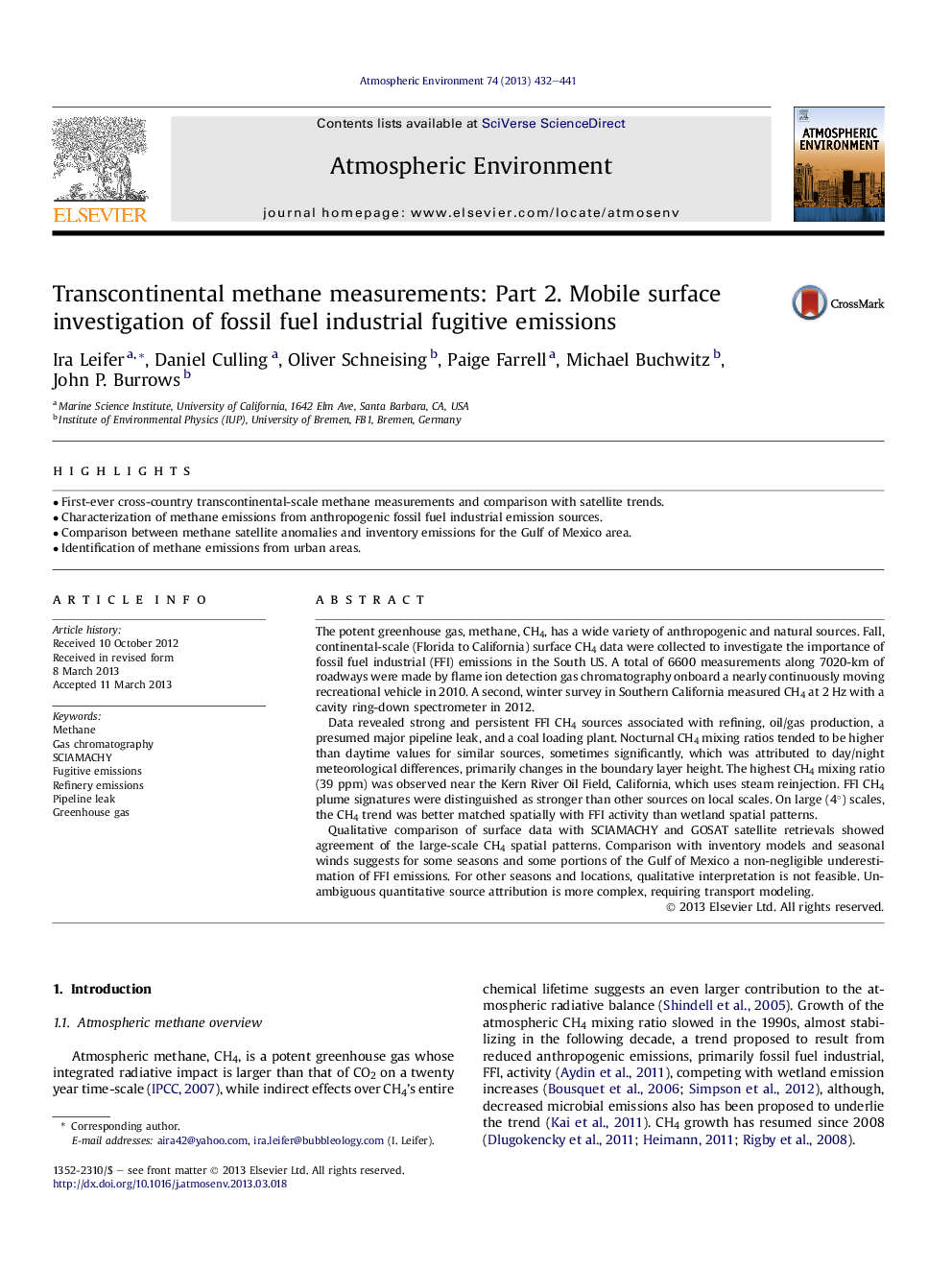| Article ID | Journal | Published Year | Pages | File Type |
|---|---|---|---|---|
| 4438209 | Atmospheric Environment | 2013 | 10 Pages |
•First-ever cross-country transcontinental-scale methane measurements and comparison with satellite trends.•Characterization of methane emissions from anthropogenic fossil fuel industrial emission sources.•Comparison between methane satellite anomalies and inventory emissions for the Gulf of Mexico area.•Identification of methane emissions from urban areas.
The potent greenhouse gas, methane, CH4, has a wide variety of anthropogenic and natural sources. Fall, continental-scale (Florida to California) surface CH4 data were collected to investigate the importance of fossil fuel industrial (FFI) emissions in the South US. A total of 6600 measurements along 7020-km of roadways were made by flame ion detection gas chromatography onboard a nearly continuously moving recreational vehicle in 2010. A second, winter survey in Southern California measured CH4 at 2 Hz with a cavity ring-down spectrometer in 2012.Data revealed strong and persistent FFI CH4 sources associated with refining, oil/gas production, a presumed major pipeline leak, and a coal loading plant. Nocturnal CH4 mixing ratios tended to be higher than daytime values for similar sources, sometimes significantly, which was attributed to day/night meteorological differences, primarily changes in the boundary layer height. The highest CH4 mixing ratio (39 ppm) was observed near the Kern River Oil Field, California, which uses steam reinjection. FFI CH4 plume signatures were distinguished as stronger than other sources on local scales. On large (4°) scales, the CH4 trend was better matched spatially with FFI activity than wetland spatial patterns.Qualitative comparison of surface data with SCIAMACHY and GOSAT satellite retrievals showed agreement of the large-scale CH4 spatial patterns. Comparison with inventory models and seasonal winds suggests for some seasons and some portions of the Gulf of Mexico a non-negligible underestimation of FFI emissions. For other seasons and locations, qualitative interpretation is not feasible. Unambiguous quantitative source attribution is more complex, requiring transport modeling.
